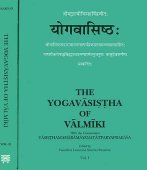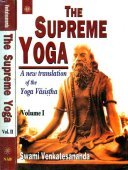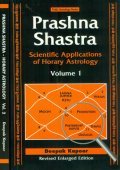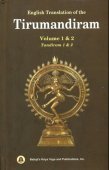Illusion: 1 definition
Introduction:
Illusion means something in Hinduism, Sanskrit. If you want to know the exact meaning, history, etymology or English translation of this term then check out the descriptions on this page. Add your comment or reference to a book if you want to contribute to this summary article.
Images (photo gallery)
In Hinduism
Purana and Itihasa (epic history)
Source: Shodhganga: Elements of Art and Architecture in the Trtiyakhanda of the VisnudharmottarapuranaIllusions (and Magic) were traditionally practiced as part of the “sixty four kinds of Art”, according to the Kamasutra of Vatsyayana.—Cf. the Sanskrit Aindrajāla.—Indian tradition, basically includes sixty four Art forms are acknowledged. The history of Indian Art covers approximately five thousand years which presents a rich and almost continuous record. The references of sixty four kinds of Kala (कला, kalā) are found in the Bhagavatapurana, Shaiva-Tantras, Kamasutra of Vatsyayana etc.

The Purana (पुराण, purāṇas) refers to Sanskrit literature preserving ancient India’s vast cultural history, including historical legends, religious ceremonies, various arts and sciences. The eighteen mahapuranas total over 400,000 shlokas (metrical couplets) and date to at least several centuries BCE.
See also (Relevant definitions)
Ends with: Great illusion.
Full-text (+805): Maya, Mahamaya, Indrajala, Avidya, Svapnaprapanca, Ajnana, Samshcat, Mayavada, Bhutasrishti, Nirmoha, Maricika, Mayamoha, Atimaya, Mithyatva, Vismapana, Nirabhasa, Mayajala, Gunakrita, Pratibhasa, Mantra.
Relevant text
Search found 283 books and stories containing Illusion; (plurals include: Illusions). You can also click to the full overview containing English textual excerpts. Below are direct links for the most relevant articles:
A comparative study between Buddhism and Nyaya (by Roberta Pamio)
6. Nature of Illusion < [Chapter 1 - The Nature and Criterion of Knowledge]
5.3. Dharmakīrti’s Definition of Perception < [Chapter 3 - The Buddhist Theory of Perception]
2. Vasubandhu and His Works < [Chapter 3 - The Buddhist Theory of Perception]
The Tattvasangraha [with commentary] (by Ganganatha Jha)
Verse 1315-1320 < [Chapter 17 - Examination of the Definition of Sense-perception]
Verse 1313-1314 < [Chapter 17 - Examination of the Definition of Sense-perception]
Verse 282 < [Chapter 7 - Doctrine of the Self (ātman, ‘soul’)]
Mahayana Mahaparinirvana Sutra
Chapter XLIII - On Bodhisattva Kasyapa (d) < [Section Nine]
Chapter XIV - On the Parable of the Birds < [Section Two]
Chapter X - On the Four Truths < [Section One]
A History of Indian Philosophy Volume 4 (by Surendranath Dasgupta)
Part 3 - The World as Illusion < [Chapter XXIX-XXX - Controversy Between the Dualists and the Monists]
Part 5 - Eschatology < [Chapter XXIV - The Bhāgavata-purāṇa]
Part 7 - The theory of Avidyā refuted < [Chapter XXIX-XXX - Controversy Between the Dualists and the Monists]
The Great Chariot (by Longchenpa)
Part 2c.5 - The example of samsara and nirvana < [B. The teaching of the three factors of immovable samadhis]
Part 2c.3 - The wisdom of proliferation < [B. The gradation of powers of those who meditate into high, middle, and low]
Part 1 - The natural state < [B. The view that realizes suchness]
Taittiriya Upanishad Bhashya Vartika (by R. Balasubramanian)
Verse 2.64 < [Book 2 - Brahmavallī]
Verse 2.664 < [Book 2 - Brahmavallī]
Verse 2.454 < [Book 2 - Brahmavallī]
Related products






